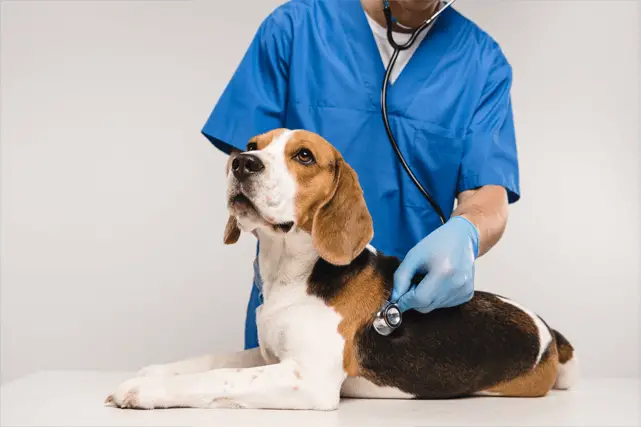What Does Blood in Dog Stool Mean
18.03.2021.
Finding blood anywhere around our dog is a worrying sign. Blood in dog stool is a clear sign something is not quite right with our dog. It is a time when most dog owners start panicking, and for a good reason. There are many reasons why there can be blood in dog stool, and none of them should be taken lightly. Here is what you should know about finding blood in your dog’s stool.
Types of blood in dog stool
There is one thing all dog owners should learn to differentiate when it comes to blood in dog stool - what type it is. Understanding that difference can help your vet determine what is wrong with your dog and where the problem is most likely located. We need to see if the stool is fully formed or in the form of diarrhea. There are two types: hematochezia and melena.
Hematochezia
Hematochezia is a lot easier to spot. That is bright red, clearly distinctive blood present in your dog’s poop. That usually means the problem is located in the lower digestive tract, and the blood hasn’t been digested.

If you notice bright red blood in dog stool, you should call your vet. Luckily, this is usually not a sign of any severe, life-threatening issues. If you notice a single strain of blood on your dog’s poop, more often than not, it is just a one-time thing. Nevertheless, call your vet and make sure you tell them what happened.
There are other possible reasons, and finding a lot of blood or your dog is constantly pooping blood that can be a worrying sign. You should call your vet and schedule an appointment as soon as possible. Some of the most common reasons for blood in dog stool or bloody diarrhea in dogs are;
- Trauma
- Toxins
- Anal sac infections or impactions
- Colitis
- Parasites (most commonly hookworms)
- Inflammatory bowel disease
While these might be the most common reasons for bloody diarrhea in dogs, they are also the most benign. These issues will cause some discomfort and even pain. Still, with proper treatment, the affected dog can make a full recovery. There are other reasons for bloody diarrhea in dogs. The reasons are infections (bacterial and viral), canine parvovirus, hemorrhagic gastroenteritis, and some forms of cancer are possible.
The vet will probably ask for different tests to determine what is causing blood in your dog’s stool. These tests can include blood work and stool exams. There is one thing all dog owners should remember;
If you think your dog might have been exposed to parvovirus, you should call your vet ahead. Tell them you think your dog might have parvo, and the vet will do everything they can to prevent the infection from spreading.
Canine parvovirus is a dangerous condition that has a high mortality rate. You can read more about it here - Parvovirus in dogs.
Melena
Melena is harder to notice and will require a closer examination of your dog’s poop. You can notice it if you see a dark, tarry, sticky, jelly-like substance in your dog’s poop. Sometimes, dog owners will need to rub their dog’s poop on a piece of paper and see if the color changes to red or reddish. Melena indicates there is a problem in the upper digestive tract. It means the blood was swallowed and partially digested.
Most dog owners are familiar with their dog’s stools. They know shapes, colors, and consistency. It is not a pretty part of dog ownership, but it is necessary. If you notice dark tarry stool, call your vet and ask for an appointment. Some of the most common reasons there is tarry blood in dog stool are;
- Infections
- Ulcers
- Inflammatory disorder
- Parasites
- Kidney failure
- Toxins
- Tumors
- Foreign bodies
- Trauma
- Hormonal imbalances
- Clotting disorders
- Addison’s disease
- Liver disease
- Pancreatitis
- Bad reactions to medications
As you can see, there are many reasons why there can be tarry blood in dog stool. Sometimes, even vets have a hard time determining the exact reason, so you must keep a close eye on other symptoms. These diseases and problems will cause different symptoms, and it is up to the dog’s owners to notice them. Keep an eye on symptoms like:
- Breathing issues
- Changes in appetite
- Activity level drops
- Bloody urine
- Vomiting
- Constant diarrhea
If you notice these things, call your vet immediately and ask for an urgent appointment. Now you know what to look for in the dog’s stool and what the reasons behind bloody diarrhea in dogs might be. If you notice them, you will know how to describe them to the vet and help them determine the root of the problem. The sooner your dog gets a check-up, the better chances of a successful recovery.
World Dog Finder team







Share